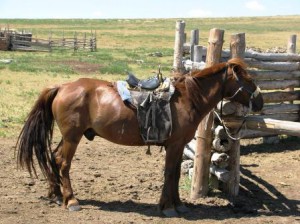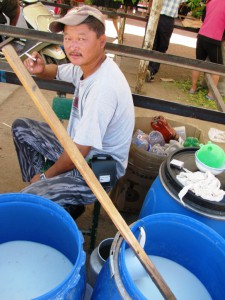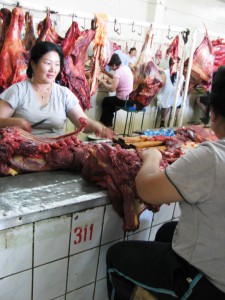![]() There are two papers out just now which review in detail archaeobotanical and genetic data to elucidate the early history of crops. Dorian Fuller and numerous co-authors do it for Asian rice (Oryza sativa) 1, Hakan Özkan and others do it for emmer wheat (Triticum dicoccoides). 2 And Fuller actually also comments on the emmer paper on his blog. 3
There are two papers out just now which review in detail archaeobotanical and genetic data to elucidate the early history of crops. Dorian Fuller and numerous co-authors do it for Asian rice (Oryza sativa) 1, Hakan Özkan and others do it for emmer wheat (Triticum dicoccoides). 2 And Fuller actually also comments on the emmer paper on his blog. 3
In such situations, my first instinct is to look for commonalities, rather than get lost in the specifics. 4 Certainly, the occasional difficulty of reconciling archaeobotanical and genetic data comes up in both reviews. Actually there’s a third paper out which looks at that too, suggesting that “genetic and archaeological studies represent complementary perspectives on domestication, each highlighting a different facet of this complex problem.” 5 Complexity is a word that recurs a lot, in fact. Here’s Fuller: “Asian rices have had a complex history.” And here’s Özkan: “The spread of domestic emmer would have been extremely complex…”
But the really interesting question to me is whether there are similarities within the complexity. As Tolstoy might have asked, are the early histories of different crops complex each after their own fashion? Fuller summarizes the emmer story as one of “multiple starts of cultivation, gradual domestication, but the possible predominance of one domesticated line at the end of the process,” and there certainly are some echoes of that in rice. But I want to focus on one little series of events or processes that occurs in both rice and emmer, in each case with its peculiarities, but nevertheless comparable.
Cultivated emmer (Triticum dicoccon) was developed from its wild progenitor (T. dicoccoides) in south-eastern Turkey. 6 It then spread to the north-east, where it came into contact with wild Aegilops tauschii. Somewhere in the corridor between Armenia and the Caspian Sea, hybridization between the two gave rise to hexaploid bread wheat from tetraploid emmer. Well, something kind of similar also happened in rice. Fuller’s paper has a nice diagram summarizing the relationship between japonica and indica rices. Simplifying wildly, japonica arose in China from wild Oryza rufipogon. It was then taken to India, where it came into contact with cultivated proto-indica rices and also the wild species from which that was derived (O. nirvana). Hybridization and back-crossing eventually led to fully indica varieties. A crop develops in one place, then moves somewhere else, where it interacts with something, leading to the development of a somewhat different crop.
Now, I’m not sure whether the differences in this process, in particular the fact that polyploidy was involved in the emmer case but not rice, are more important than the similarities. But I wonder if the domestication and spread of crops can perhaps be broken down into a series of similar tropes, or maybe leitmotifs, I’m not sure what one would call them. At the very least it might help people like me make sense of — and try to remember, and keep straight — the complexities.
 They may be trying to
They may be trying to 

